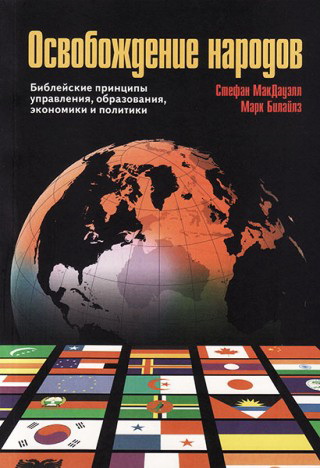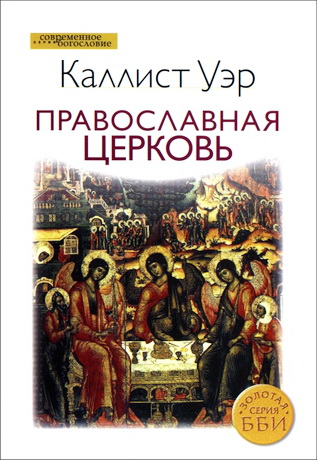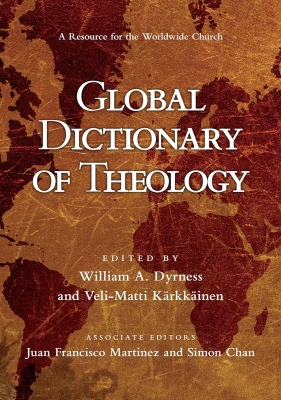
Hart - The Animals Mentioned in the Bible - модуль BibleQuote
Henry Chichester Hart - The Animals Mentioned in the Bible
Aeterna Press, 2015. - 162 p.
In the following work the writer has availed himself of whatever knowledge he could obtain from previous authors. In addition to these sources, he has had the advantage of a lengthened tour in pursuit of Natural History in the Holy Land and its confines. The familiarity with most branches of the subjects here dealt with which arises from such exploration is most advantageous, if not necessary for the work.
Owing to the researches carried on by the Palestine Exploration Fund, considerable accuracy has been arrived at in our estimate of Palestine Natural History. By its assistance, Canon Tristram worked out his valuable series of investigations, which have supplied us with a fund of information. And it was under the auspices of this Society that the expedition of which I formed a part brought a successful journey to a close, an account of which will be found in its publications by the leader of the party, Dr. Hull, F.R.S.
Other works have been consulted—Bible Animals, by the Rev. J. G. Wood; Smith’s Dictionary of the Bible; articles in the Transactions of the Biblical Archæological Society, by the Rev. Wm. Houghton; The Natural History of the Bible by Thaddeus Mason, may be especially mentioned. These relate especially to the subject in hand, and the last mentioned volume will be found of much value as a survey of previous knowledge, although written before much accurate information had been gathered on the spot by competent observers.
With regard to the present work, it will be felt by all that any fresh light, however slight, which can be thrown by modern scientific study upon obscurities in Holy Writ is of the first importance; and as the obscurities, so far as they come within the scope of the present volume, arise from our own ignorance, it behoves all labourers in this sacred field of investigation to toil with undiminished assiduity until these obscurities be removed. In many cases, error arises from seeking for too much accuracy. Generic names, or terms used to convey a general idea—say of a hawk, a gull, or a lizard—should not be limited in too specific a manner. This applies especially to those passages where the sense is metaphoric. Where a special animal is undoubtedly intended, as in the case of its being forbidden for food, we desire an accurate interpretation; and when we consider how little was known of the natural products of Palestine at the time the Bible was rendered to us from the Hebrew, it is not marvellous that some of the interpretations do not bear the test of recent research. On the other hand, every fresh observation lends a new force or adds an additional beauty to one or more passages; and at the same time that it explains a difficulty of the text, it increases in us a reverence and a faith for the inspired character of the Sacred Volume.
The writer’s method has been to take in alphabetical order every animal mentioned in the Bible, and to deal with each so as to draw especial attention to the characteristics alluded to in the various references. Where the translation seems to be doubtful, either from the nature of the context, or from the fact that the same word has elsewhere received a different rendering in the Scriptures, or because the animal quoted does not now and probably did not inhabit Palestine—in these cases what appeared to be the most probable of the various suggestions offered by different commentators has been given, leaving the reader to judge for himself in accordance with the weight of evidence. It will at once be seen that in several instances the suggested emendations are unmistakably correct, while in others they are of so purely hypothetical a nature as to be hardly worthy of consideration. And where a general term is used, it is wise to pause well before endeavouring to twist it into a particular signification in order to meet our present knowledge of Natural History in the Holy Land.
* * *
Camel
(Heb. גָּמָל gamal)
Gamal (Arabic جمل gemel) is the common Hebrew name for this most valuable of all animals in the desert regions of the East. The word includes every creature of the kind, whatever the species, sex, age, or breed; and the name of the animal is retained with little alteration in modern languages.
Another word בֶּכֶר beker, or its feminine בִּכְרָה bikrah, occurs twice, and is translated ‘dromedary’ (Isa. 60:6, Jer. 2:23).
Camels were used for a variety of purposes. They served for riding, as when in 1 Sam. 30:17 David smote the Amalekites which had spoiled Ziklag, ‘and there escaped not a man of them, save four hundred young men, which rode upon camels and fled.’ And in Esth. 8:14, ‘the posts that rode upon mules and camels.’ In this latter passage the word has given rise to some dispute. It is (אֲחַשְׁתְּרָנִים achashteranim) rendered ‘swift steeds’ in the Revised Version. Camels were employed as beasts of burden generally, the purpose for which they are most valuable and best adapted. The load is placed either on a saddle or pavilion affixed to or round the hump, or depends on either side of the animal in panniers or creels. The enormous masses of gear, furniture, agricultural utensils or produce, or other impedimenta, that can be piled upon the back of a camel is most astonishing to a new-comer in such places as Jaffa, Beyrout or Smyrna. Small camels are loaded up to 800 lbs., large ones to half a ton. With this load they will travel thirty to thirty-five miles a day at a uniform pace of about three miles an hour. Those which are used for riding at speed are lighter built and bred for the purpose. They are usually called dromedaries (though this name properly belongs to all Arabian camels), and will travel from sixty to ninety or even a hundred miles in a day. The pace is about eight miles an hour.
Camels were also used for draught. ‘A chariot of camels’ is mentioned in Isa. 21:7. Probably they were also used for agricultural purposes. I have seen them yoked to the plough or bush-harrow both in Southern Judæa and in the Ghor es Saffieh, at the south end of the Dead Sea. But the valuable qualities in the camel are its powers of weight-carrying and of subsisting without food or drink for comparatively long periods without injury. Camels have been known to travel as many as ten days without water. The Arabian camel is furnished with a series of water-cells lining the first stomach, which are capable of carrying as much as a gallon and a half of water as a reserve. The ‘bunch’ or hump on the back is composed of fatty cells, and is a reserve of food—fat and plump when the animal is well fed and lightly worked, shrivelling to nothing after hard work and bad feeding. In the Arabian camel, the only one met with in Palestine or south of it, the hump is single. In the Bactrian camel, which is found east and north of Arabia, it is double. The Arabian camel, or ‘Ship of the Desert,’ is found from North-west Africa to India.
Camel’s flesh was forbidden for food; ‘because he cheweth the cud, but divideth not the hoof, he is unclean to you’ (Deut. 14:7, Lev. 11:4). It is eaten now, when better cannot be had, in most parts of the East, but the meat is said to be very coarse and dry. The camel’s colt is, however, esteemed by the Arabs as a great luxury. The milk is much more used, and though strong, is excellent. Camel’s milk was no doubt used by the Jews. We read in Gen. 32:15, that Jacob ‘took a present for Esau his brother … thirty milch camels with their colts.’
Camel’s hair is in use for the manufacture of various materials by the Arabs, such as saddle-bags, both for donkeys and camels. The Ghawarneh Arabs at the Dead Sea used tents made of this material. These saddle-bags are usually red, black and white, and fringed with long pendent tassels, which sweep the ground almost, and are supposed to heighten the dignity of the sheikh perched above. Other decorative trappings of shells or silver laid on bright-coloured bits of cloth are stitched on to the halter or suspended from the neck. This custom has lasted since the time of Gideon. See Judg. 7:21, 25. The substance to which the hair is woven is coarse and unyielding, and would furnish neither warmth nor comfort as raiment. John the Baptist we are told, ‘was clothed with camel’s hair’ (Mark 1:6), and again, ‘the same John had his raiment of camel’s hair’ (Matt. 3:4). This substance is made by the Arab women. The skin of the camel is valuable for many purposes. Of it are made tents, shields, harness, saddles, trunks, &c. Camels were always, as they are now, the carriers for traders and caravans in the Eastern countries. We read in Gen. 37. that Joseph was sold to ‘a company of Ishmaelites from Gilead, with their camels bearing spicery and balm and myrrh, going to carry it down to Egypt.’ The wealthier among the patriarchs owned large herds of camels. Job possessed six thousand. The sons of Reuben took from the Hagarites when ‘they were delivered into their hands, of their camels fifty thousand’ (1 Chron. 5:21). At this day the Beni Sakker Arabs who inhabit the country of the Hagarites of old, the western Belka, are said to possess 100,000 camels; while the sheikh of the Anazeh, the purest of the Bedouin tribes, who inhabit the country west from Damascus to Palmyra and on to the Euphrates and the plateau of Nejd, can muster a force of 10,000 horsemen and 90,000 camel-riders.
It is commonly supposed that the camel is fitted only to traverse tolerably level or even ground. This is not by any means the case. The camels of Sinai can pick their way with extraordinary sure-footedness amongst boulders and in rocky places which would puzzle many a mountain pony. They move with extreme caution, and seldom or never make a mistake. The ascent of Mount Hor is in some places a remarkable test of a camel’s skill in climbing. Watery or muddy ground is the one obstacle which they will not face, and in presence of which they are completely helpless. The broad, elastic, cushion-shaped foot, so admirably fitted as a pad for stony or smooth dry ground, becomes most dangerous in anything of the nature of sliminess.
Camels are so well known, that description is unnecessary. The head is usually carried nearly on the level with the hump, but when raised is almost nine feet from the ground, and they are thus often enabled to browse upon the very tops of the stunted acacias and tamarisks in the desert.
The camel is an intensely stupid animal, and is only docile because it has no originality. It never becomes attached to its rider, and in that respect is only half domesticated. It is entirely devoid of sympathy, and the attempt to guide it into any sort of understanding with its master, such as a dog or a horse instinctively at once acquires, is at all times a failure, and resented with screams and bites. The odour of the animal is rank, and its annoying habit of swerving from its track with a jerking bite at every morsel of green food, renders its jolting pace, which most people find very disagreeable, still more so. It may be called a patient animal, but the patience becomes at times a most extraordinarily immovable obstinacy, and there are well-authenticated instances of its having cherished a revengeful spite against a driver who has corrected it till its opportunity arrived months later, and woe to the arm or leg which receives the bite of a camel!
The camel rests kneeling upon its chest, elbows, knees, and hocks, and upon these there are indurated callous pads of thickened skin. It is when in this position that the animal is loaded, and the rider gets upon the padded wooden frame with an upright support in front which is called the saddle. The camel is not bitted, but guided by a string attached to a noose fitted tightly round the nose. Guidance is, in fact, of very little use, as the animal is exceedingly difficult to direct in any way except that which it proposes to follow; either some obvious well-known track, or else the line of the caravan. Camels have been used by man as far back as the earliest records take us, nor is there any evidence as to their original home, or the period or people by whom they were first domesticated. The animal, however, never appears upon the early Egyptian monuments; and this, coupled with other testimony, proves ‘the remarkable fact in the history of cultivation, that the camel was first introduced into Africa as late as the third century of the Christian era, although that animal seems expressly made for the Libyan desert.’
The camels with the llamas form together a group called the Tylopoda, or callous-footed, which differ from the other ruminants in having the feet protected by a hardened skin instead of by hoofs, as well as in some other particulars.





Комментарии
Пока нет комментариев. Будьте первым!